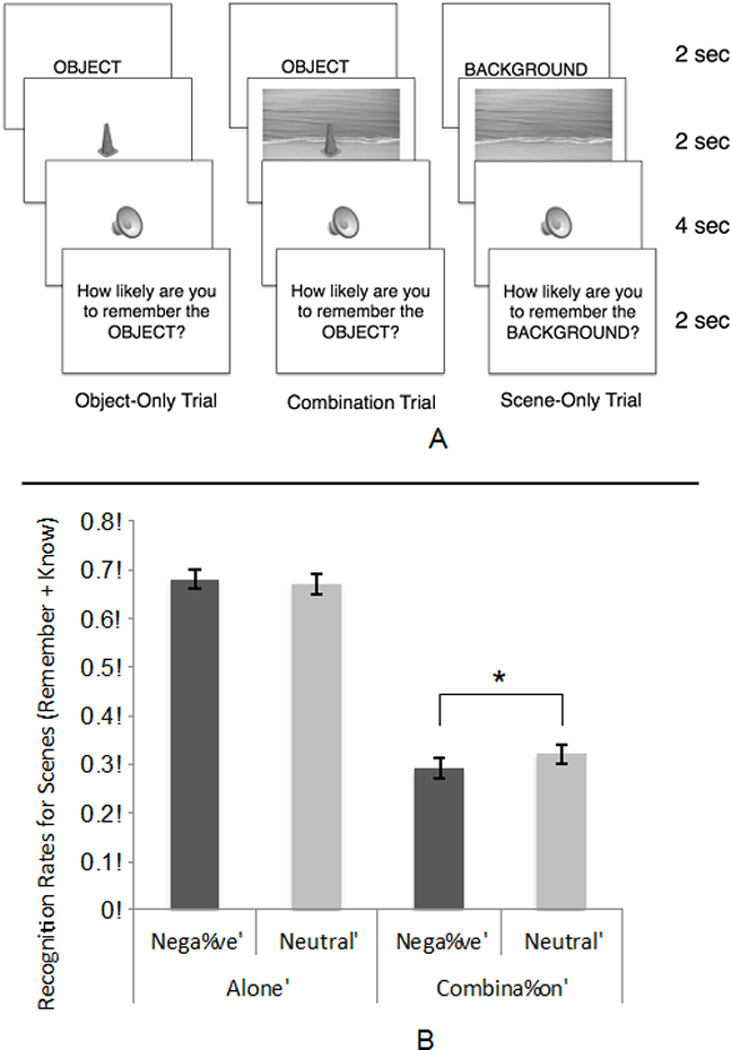Figure 1.

Figure 1A shows the trial structure. On every trial, participants were given a cue, asking them to pay attention to either a background or an object. They were then presented with either an object alone, a scene alone, or a combination (which is an object superimposed on a scene). A sound was played, and the sound was either negative or neutral. They were then given a judgment of learning question, which asked them to indicate how likely they were to remember the cued image. A jittered ITI followed, of either four seconds, six seconds, or eight seconds. Figure 1B shows that scenes presented as part of a combination had significantly lower overall (remember + know) recognition rates when followed by negative sounds than by neutral sounds (* p < .05). Emotion did not significantly influence memory for preceding solo scenes.
